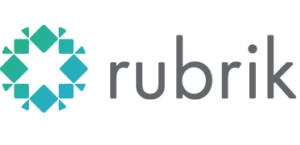November 20, 2018
Is Hybrid Cloud Storage Right for You? Read These Key Considerations
With careful planning, spreading data across your data center and the cloud can improve scalability, agility and savings.

“A place for everything, and everything in its place.”
You’ve probably heard this familiar idiom encouraging tidiness. It also sums up the basic concept of hybrid storage. Enterprises seeking better ways to manage and organize their data, and the associated costs, can find new flexibility in hybrid solutions, which extend on-premises arrays into a hyperscale cloud storage tier.
Hybrid storage gives enterprises the ability to:
- Infinitely scale storage using the cost-effective flexibility of the cloud, such as paying only for what you need
- Minimize the capital and operational expenses of on-premises storage —such as infrastructure, power, cooling and staff — by letting the cloud shoulder more of the load
- Better protect data by moving it to the cloud, where it is less vulnerable to disaster than it would be if stored in a single data center
How Access Frequency Impacts Your Data Storage Strategy
The key to maximizing these benefits is recognizing that not all data are alike. I recommend you use this principle to determine which data you put into the cloud and which resources you keep on-premises.
Data that you need to access frequently, for example, typically belong on-premises, where flash storage provides faster access. But flash storage is expensive, so this strategy maximizes its ROI by using it efficiently and wisely.
Data that you access less frequently can go in the cloud. That saves money because the biggest expense of the cloud is egress charges. The less data you pull down, the less you pay.
For enterprises moving to hybrid storage, frequency is a top consideration, just as it is with Software as a Service (SaaS) backup. Our enterprise customers often turn to CDW for help in determining which data sets should be backed up, say, every 15 minutes and which ones can go a day, a week or a month. We can also provide the same kind of analysis and guidance for hybrid storage.
Addressing Staff Connectivity Requirements and Cloud Compliance
Connectivity is another key consideration. For example, which data resources do your branch offices use? If those workloads are in the cloud, branch staff will need connections that are fast, but also cost-effective. Increasingly, many organizations are finding that a software-defined WAN is the way to go.
Finally, take into account any legislation around compliance, such as HIPAA, the General Data Protection Regulation (GDPR) and the Payment Card Industry Data Security Standard (PCI DSS) that may affect your data management. In CDW’s assessment process, vertical experts identify all of the unique requirements for a particular industry as part of developing a hybrid storage strategy. That’s another similarity with SaaS backup: Hanging onto data longer than necessary — or allowed — wastes money and can create legal liability.
Hybrid storage is a particularly good fit for enterprises with a cloud-first strategy. It frees them from needing to purchase more data center resources while providing an opportunity to leverage hyperscale cloud options. And even if a business doesn’t have a cloud-first strategy, hybrid storage still provides agility and savings that every organization can use these days.
Visit CDW.com/DataCenter to learn more about transformational data center technologies.
This blog post brought to you by:

